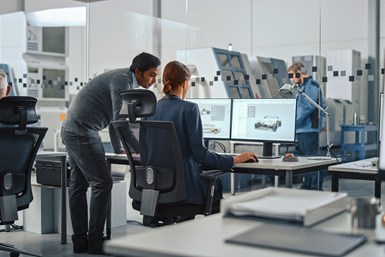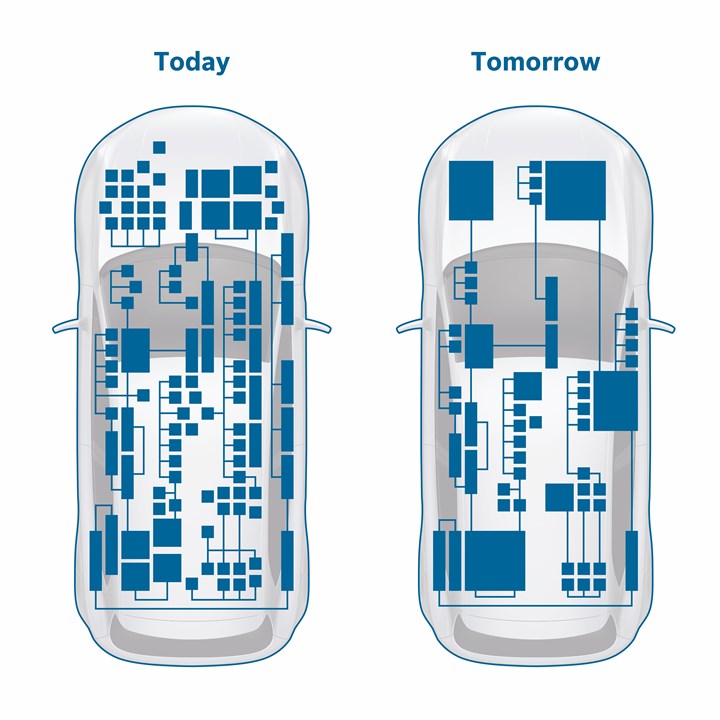Big Organizational Change at Bosch
The future—as in a few months from now—is largely digital
Who: 17,000 employees of Bosch at more than 40 locations in over 20 countries. People who work in the Car Multimedia division. And others from Powertrain Solutions, Chassis System Control and Automotive Electronics divisions. Software, electronics and electrical engineers.
What: Come 2021 they’ll all have new jobs.
What?!: Well, not entirely new. But Bosch has decided to create what it is calling the Cross-Domain Computing Solutions division.

Bosch is creating the Cross-Domain Computing Solutions division to bring some 17,000 people together to advance automotive computing. (Images: Bosch)
How come: “Supplying software from a single source is our response to the enormous challenge of making cars ever more digitalized,” says Harald Kroeger, member of the Bosch board of management who will run the operation.
Details: Bosch anticipates that the market for “software-intensive electronic systems” will grow 15% annually between now and 2030. So it thinks that the single operation will be beneficial. Dr. Stefan Hartung, member of the board of management of Robert Bosch GmbH and chairman of its Mobility Solutions business sector, puts it thusly: “Even now, a vehicle contains some 100 million lines of software code. Only a company with wide-ranging electronics and software expertise will be in a position to shape the future of mobility.”
What will they do: They’re going to develop vehicle computers, control units and sensors.
Why is this important: Kroeger: “The core task of Cross-Domain Computing Solutions will be to make the complexity of electronic systems controllable. In addition, the systems will have to be as reliable as possible.”
Key words: Controllable. Reliable.

Working toward compute architecture simplification.
Complexity reduction, too: “Today’s premium vehicles feature more than 100 individual control units, and even compact vehicles have between 30 and 50. Such powerful computers will allow us to significantly reduce these numbers,” Says Kroeger. Fewer computers that have cross-domain functionality can help create a consistent IT architecture. Which is less complex.
Looking ahead: Automated vehicles will have between 300 and 500 million lines of code. Apparently, the Large Hadron Collider runs on 50 million, and a device that could conceivably create tiny quantum black holes is probably rather complex, but apparently not as much as an automated grocery delivery vehicle. “Software will play a crucial part in determining a vehicle’s features and feel in the future. It will help make cars ever more intelligent, and provide drivers with a tangible benefit,” Kroeger says.


.jpg;width=70;height=70;mode=crop)